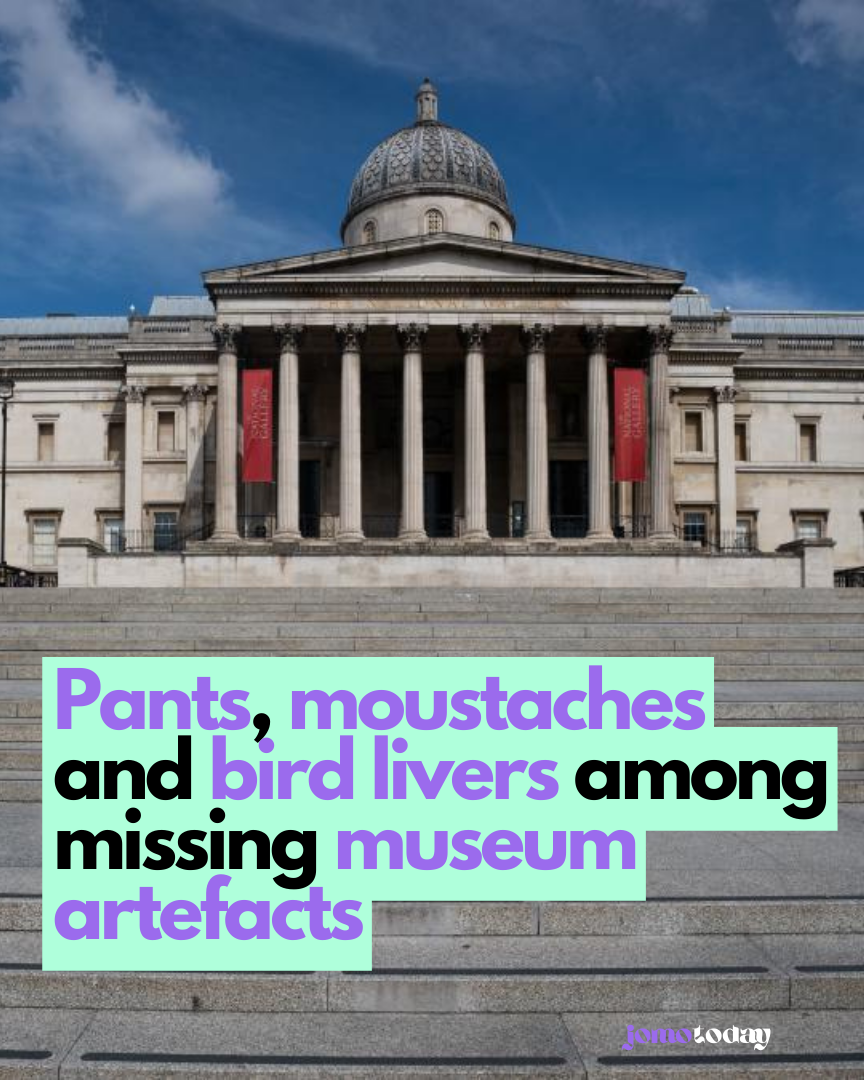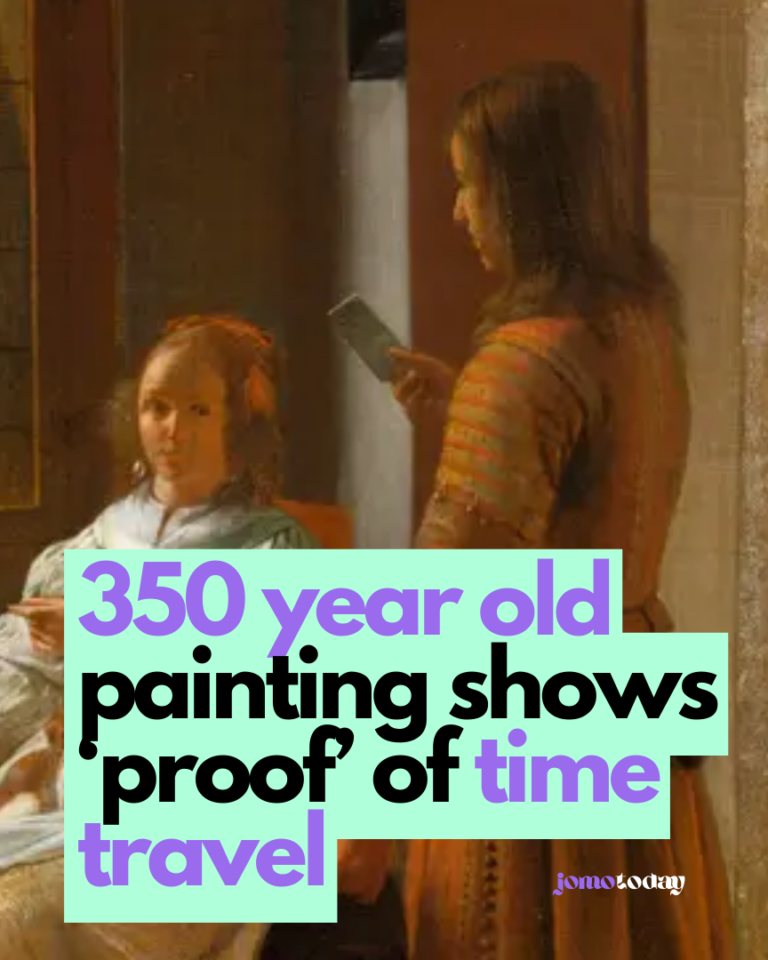Over the past 20 years, publicly-funded museums and galleries have reported over 1,700 missing items, including pants, moustaches, and bird livers.

Publicly-funded museums and galleries say more than 1,700 items have gone missing over the past 20 years.
Museums and galleries that receive public funding are being subject to freedom of information requests seeking information about items that have been absent in the past 20 years. This request follows the dismissal of a British Museum staff member due to the disappearance of over 2,000 artefacts. Among the peculiar missing items are a Saddam Hussein calendar and an aircraft navigational system.
The National Portrait Gallery, which reopened after a three-year refurbishment in 2023, has 45 items labeled as “not located,” although they assert that these items are neither missing nor stolen.
During the period between 2007 and 2022, several significant pieces including a 1869 drawing of Queen Victoria, a mid-19th Century engraving depicting King John granting the Magna Carta, a bronze sculpture of painter Thomas Stothard, and a 1947 negative image of the late Queen’s wedding to the Duke of Edinburgh were recorded as “not found.”
The gallery clarified that it is still in the process of conducting searches for these items after the refurbishment. The items marked as unlocated constitute only 0.02% of the gallery’s vast collection, which comprises 12,700 portraits and 164,000 images.
Regarding the unlocated items, the gallery stated that a majority of them consist of photographic negatives, most of which have been digitally scanned and are accessible to the public through the online collections database.
Over 180 artifacts, including oil and watercolor paintings, a shadow puppet, false mustaches, various drawings, underpants, stockings, and a mousetrap, were reported missing without detailed descriptions or timelines for their disappearance. The Kensington design institution, while acknowledging the list of missing items as part of routine auditing, did not disclose specifics about when these objects vanished. The V&A museum emphasized their commitment to safeguarding national collections and stated that the absence of these items does not necessarily imply theft or loss. They clarified that discrepancies could arise from outdated catalog entries due to collection movements, expressing confidence in the regular recovery of items through this ongoing process.
Among the group comprising the National Maritime Museum, Queen’s House, the Royal Observatory, Greenwich, and Cutty Sark, approximately 245 items remain unaccounted for. These items range from a cannonball, a navigational aircraft computer, and a gun-sighting telescope to charts, liquid compasses, an Act of Parliament, an Altazimuth circle, and ribbons and bands for caps.
The museum has attributed these discrepancies to potential “ghost entries,” stemming from data migration from older databases, historical inaccuracies in documentation, or human errors. However, since 2008, diligent audits have led to the rediscovery of 560 items previously missing from the records.
Over the past three years, instances of missing or misplaced items from the Natural History Museum’s extensive collection have been reported, including the loss of a Diphydontosaurus jaw fragment during a loan in 2019, followed by the disappearance of over 180 fish and a stolen crocodile tooth in 2020.
Among these occurrences, Cichlid fish were misplaced while on loan, 20 animal cells were destroyed due to insufficient documentation during shipping, and approximately 24 genomic tissues from octopi and birds were lost due to inadequate refrigeration.
Moreover, the mishandling of feathers, muscle, and liver samples from Tasmanian short-tailed shearwaters and fairy prions resulted in their destruction, as they were not properly cooled and failed inspection.
However, due to these items not being catalogued, the exact number of lost samples remains unclear.
The Natural History Museum spokesperson emphasized the institution’s commitment to collection security, citing only 23 instances of missing items over 20 years within a vast collection of 80 million objects. They highlighted the museum’s stringent security measures, regularly reviewed and aimed at facilitating global research efforts to address environmental challenges.
The body comprises several institutions: the Science Museum in South Kensington, the Science and Industry Museum in Manchester, the National Railway Museum in York, the Locomotion Museum in Shildon, Co Durham, and the National Science and Media Museum in Bradford.
In 2014, this collective reported the theft of two model steam trains: a King George V and a British Railways Standard 4MT class.
Additionally, items noted as missing from their collection include a 1960s model of a deep-sea observation chamber, a diver’s watertight torch, resuscitating equipment, and a 19th-century portrait of Joseph Marie Jacquard, credited with developing a programmable loom.
Housing 425,000 artifacts across its venues, the group has initiated the use of barcodes on items to monitor their whereabouts and ensure their security.
Seven artifacts, among them a protective charm from 1933, have gone missing from the Horniman Museum, renowned for its exhibits spanning anthropology, natural history, musical instruments, and a vast collection of taxidermy animals. The museum mentioned it has taken a thorough look at its security measures in response to thefts reported at the British Museum, viewing it as a precautionary step.
The Imperial War Museum recently acknowledged the disclosure of over 550 items encompassing ship camouflage drawings, private papers of British Army officers, a calendar featuring Saddam Hussein, and various currency notes. According to a museum spokesperson, these artifacts hail from periods well before the implementation of their current collections management systems and are typically considered low in value and mass-produced.
In another incident reported in November, a 19th-century cannon from the Royal Armouries collection was reported stolen from a remote off-site location. The theft was suspected to be related to metal theft, suggesting the cannon might have been taken for its scrap value rather than its significance as a part of the museum’s collection. Additionally, a pair of mounted sword bayonets also vanished while on loan from the museum.
Read More: Stratford sphere venue plans officially withdrawn by US firm






3 Comments